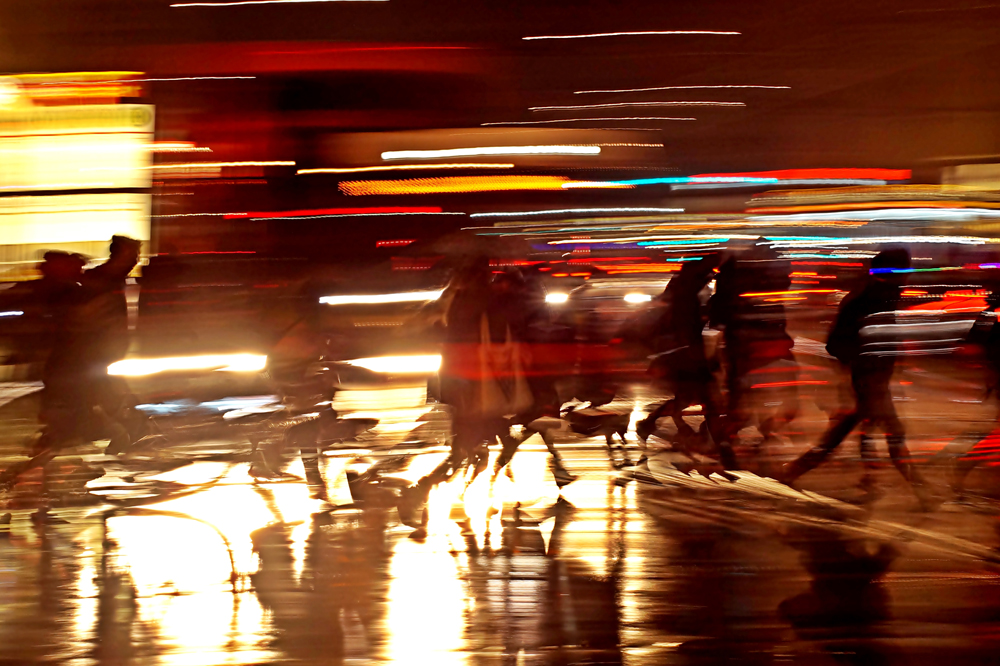
The European Transport Safety Council (ETSC)’s latest report ‘How safe is walking and cycling in Europe?’ makes for sobering reading. Aimed at policymakers at European Union (EU), national and local government level, it finds that pedestrians and cyclists – the most vulnerable road users (VRUs) – account for 29% of all road user deaths in the EU.
The figures split as follows: pedestrians 21% and cyclists 8%. Major disparities exist between countries: in the Netherlands and Denmark, for instance, there is a larger proportion of cyclist deaths compared to countries where cycling is not as widespread. But, the report insists: “This does not imply that cycling in the Netherlands and Denmark is unsafe.” In fact, their
safety record is good: in the Netherlands, people cycle 865km annually, and cyclists account for one third of all road deaths. In Denmark, the figures are 500km per year and 15%.
Although pedestrian deaths fell in 22 out of 28 EU countries from 2010-18, there were still 5,180 killed in 2018 alone. The report says the largest proportion of these was seen in Lithuania (39% of all road fatalities) and Romania (38%), then Latvia (35%), Poland (29%), followed by Hungary and the UK (both 26%).
While the number of pedestrian deaths has decreased by 2.6% on average each year from 2010, this lags behind a 3.1% annual reduction in motorised road user deaths over the same period.
In some countries - Norway, Greece, Lithuania, Switzerland, Belgium, Portugal, Latvia, the Czech Republic, Serbia and Romania – they were reduced at a similar pace. And in Slovenia, pedestrian deaths were reduced by, on average, almost five percentage points faster each year than motorised road user deaths.
But progress in reducing pedestrian deaths stagnated in Cyprus, France and Italy – and they actually increased on average by 1% each year in the UK and 0.5% in Hungary; over the same period, motorised road user deaths decreased by around 1%.

The report needs to be seen against a broader backdrop which takes in climate change and public health. Boosting levels of active mobility - particularly walking and cycling - will have economic benefits, ETSC says. It suggests that, for cycling alone, benefits in the EU are valued at €150 billion. Motorised road transport, on the other hand, creates congestion and pollution – whose economic effects are estimated at €800bn per year.
Walking and cycling are, therefore, A Good Thing – but not if people are being killed and injured. Collisions with cars, trucks, vans and motorbikes account for 99% of pedestrian and 83% of cyclist deaths in the EU. “While pedestrians and cyclists create very few risks for other road users, they are constantly put at risk by motorised traffic,” points out ETSC.
‘Intensify enforcement’
The report offers one simple message when it comes to addressing the issue: “Intensify traffic law enforcement, especially for speeding in urban areas, where there are high numbers of pedestrians and cyclists.” As statements of intent go, this could barely be clearer.
“Traffic law enforcement is a very cost-effective means of enhancing road safety,” the influential safety body continues. “Enforcement of rules relating to risky behaviour such as speeding, overtaking without keeping a proper lateral distance, distraction, drink- or drug-driving and compliance with driving and resting hours in relation to fatigue could all benefit pedestrian and cyclist safety.”
The advantages of this approach are clear, it adds: “Sustained, intensive enforcement that is well-explained and publicised has a long-lasting effect on driver behaviour.”
The report, written by Dovilé Adminaité-Fodor and Graziella Jost, suggests that sanctions should be linked to relative risk and graded - for example, for speeds higher than 30 km/h. But it warns: “It should be noted that this will only make a difference with high levels of speed enforcement and efficient handling of sanctions. Traffic law enforcement should be a priority in national policing plans. Resources should be earmarked and targets set in line with best practice in preparing national enforcement plans.”
Whichever way you look, in other words, enforcement is the key. It follows that the manufacturers of any products – from cameras to signage - which allow police forces to do that job will be studying this report carefully. And so will the authorities whose responsibility it is to keep people safe on the roads. The ETSC report is a tool which carries real weight when making the case for more, and more effective, enforcement.
Phone use
Mobile phone use – both by drivers and pedestrians – is a significant factor in accidents. In Great Britain, for example, 8% of all fatal cases in 2018 involved driver distraction: 2% of which were when the driver was using a mobile phone (with 5% due to ‘in-vehicle distraction’ and 1% outside distractions).
In the same year, 3% of fatal collisions involved “careless, reckless or ‘in a hurry’ pedestrian behaviour” – which again includes mobile phone use.

Of course, it is not all about enforcement. The physical environment is a huge factor: better infrastructure – in particular the separation of pedestrians and cyclists from motorised vehicles – would be a big help too. The report suggests that authorities should develop national safe infrastructure design guidelines for traffic calming measures, intersections, pedestrian crossings or cycleways – and that these should be regularly updated.
When it comes to how cyclists can help themselves, helmets are a must, the ETSC insists. Recent research suggests that the risk of severe head injury decreased by 69% - and that of fatal head injury by 65%, if helmets were worn. It also suggests that the ‘risk compensation hypothesis’ – the theory that a helmet encourages a feeling of complacency, leading cyclists to engage in risky behaviour – is a myth. There is “little to no support” for it, the report says.
Lawmakers can also help reduce the risk for VRUs. The EU’s General Safety Regulation and Pedestrian Safety Regulation have been updated, which means that over the next few years cars and vans will be required to have features such as automated emergency braking, VRU detection and lane departure warnings fitted, while heavy goods vehicles and vans will have to comply with direct vision standards, which should reduce the blind spots which are the cause of many fatalities.
While the ETSC research is exhaustive and paints a clear picture, the report warns that availability of data is an issue: in many countries, police collision reports may not clearly distinguish traditional bicycles from higher powered e-bikes, which could mean the dangers of new technology are not being adequately recorded. Accidents involving VRUs also tend to be under-reported or not included in road-related statistics, which means the problem could be worse than thought.
Whatever the actual casualty figures – and they are likely to be higher - the ESTC’s message regarding the importance of effective enforcement could not be clearer.
Which vehicle is the most deadly?
Collisions with heavy goods vehicles account for 10% of all pedestrian deaths and 13% of cyclist deaths in the EU – although they are relatively infrequent, fatalities occur because of the size and weight of the HGV.
Being hit by a van killed 9% of pedestrians and 7% of cyclists.
Bus collisions were responsible for 3% of all pedestrian deaths and 2% of all cyclist deaths.
In the Netherlands, 36% of collisions between a cyclist and an HGV result in a death of a cyclist compared to 8% in collisions with a passenger car.
The cyclist death rate is even higher (46%) when the cyclist is in the HGV’s blind spot at the time of a collision.
Source: ETSC
What EU member states should do
• Intensify traffic law enforcement for all motorised vehicles - including powered two-wheelers - especially of speeding, in urban areas where there are high numbers of pedestrians and cyclists.
• Strengthen enforcement against illegal parking to protect footpaths and cycle paths.
• Link sanctions to relative risk: graded sanctions should be applied for higher speeds on 30km/h and 50km/h roads where there are more pedestrians and cyclists.
• Map high-risk sites for VRUs and use this to inform and direct enforcement actions - especially when it comes to speeding.
• Introduce and enforce sanctions for VRUs who open themselves and other road users to unnecessary risks.
• Ensure that VRUs have a minimum level of traffic education and awareness
• Encourage helmet-wearing and adequate lighting for cyclists - without discouraging cycling.
Source: ETSC
What EU institutions should do
• Support member states in preparing national enforcement plans with annual targets for compliance in the areas of speeding, drink- driving and distraction - especially in urban areas where there are high numbers of pedestrians and cyclists.
• Introduce minimum requirements for cycle lighting and reflective elements.
• Revise standards for testing bicycle helmets to offer high levels of protection.
Source: ETSC











